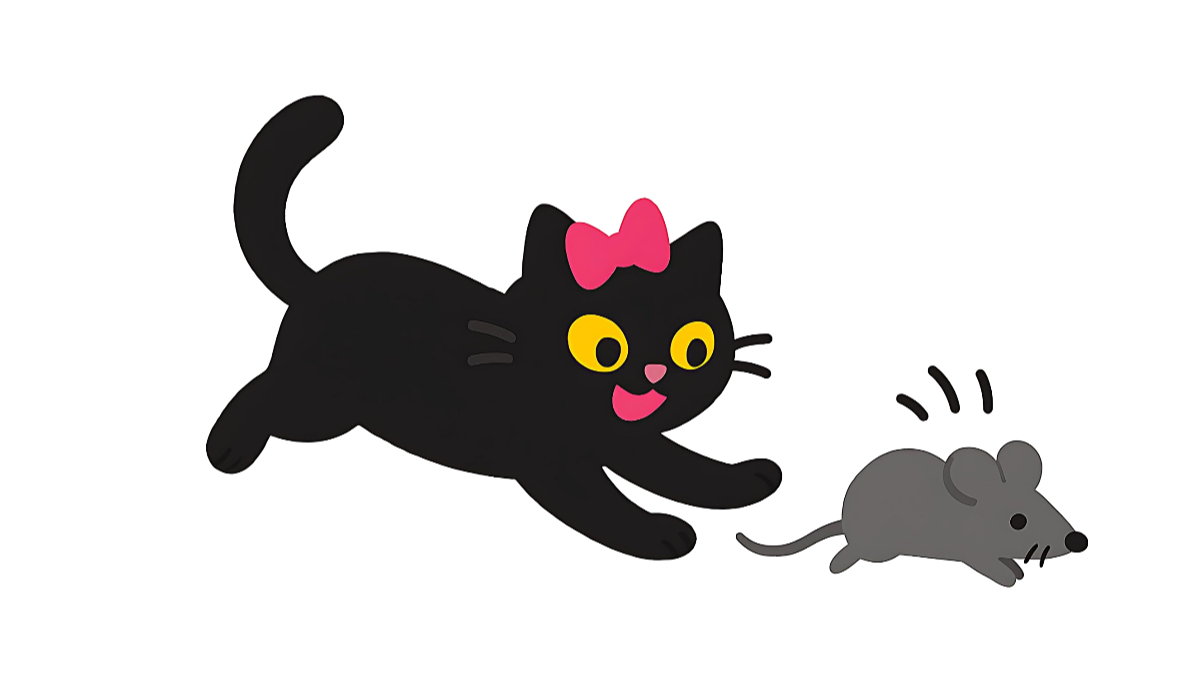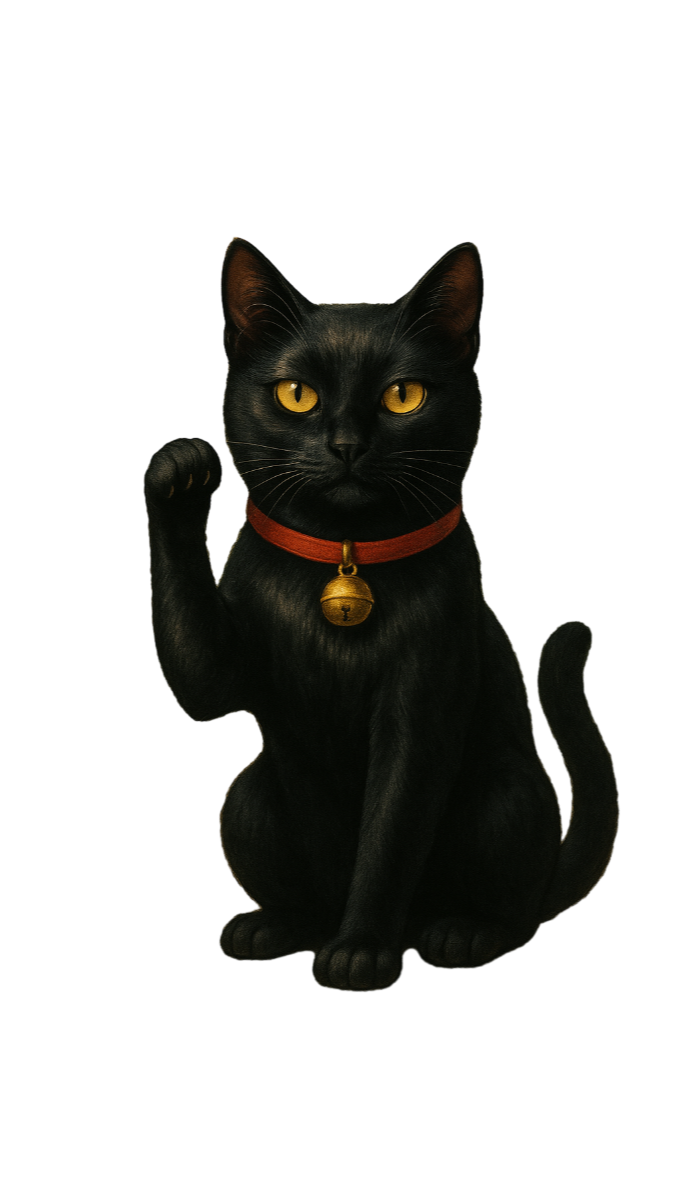Fun Filled Facts about Black Cats
Fun Filled Facts
Medieval Oops: They Blamed Cats, But It Was the Rats!
During the Black Death in the 14th century, people blamed black cats for the plague and killed them off—thinking they were evil omens. But without cats to control the rats (the real culprits), the plague spread even faster. Oops!
When the Church Turned on Cats
Did You Know? In 1233, Pope Gregory IX declared black cats were part of satanic rituals—claiming people kissed them under the tail in dark ceremonies! This bizarre belief sparked mass killings of black cats during Europe’s witch hunts.
From Familiars to Felons: The Black Cat Blame Game
During the witch hunts of the 15th to 18th centuries, owning a black cat could literally get you killed! Seen as spooky sidekicks to so-called witches, black cats were accused of being demonic companions—and often met the same grim fate as their humans. That classic “witch with a black cat” Halloween image? Back then, it was considered terrifying evidence—not costume inspiration!
The Unsung Heroes of Human Expansion
Cats may have helped humans build civilization! By keeping rodents out of grain stores and off ships, our feline friends made it possible to settle, farm, and even sail across oceans. Without their pest control skills, colonization might’ve been a total cat-astrophe!
Lucky or Unlucky? It All Depends on Where You Are
In the United States and parts of Europe, black cats have long been tangled in superstition—often unfairly seen as omens of bad luck, particularly if one crosses your path.
But in many other cultures around the world, black cats are actually symbols of luck, prosperity, protection, and even romance.
Where Black Cats Bring Good Luck:
Scotland
A black cat appearing at your doorstep is a sign of coming wealth and prosperity.Japan
Black cats are thought to attract love and protect single women from unwanted suitors. They're also seen as good luck in business.British Sailors
Sailors kept black cats on board for protection and good luck at sea, believing they could prevent storms and shipwrecks. The wives of fishermen often kept black cats at home, believing they would protect their husbands at sea.France
In some French folklore, a “matagot”—a black magical cat—will bring wealth and good fortune to those who treat it well.Russia
Black cats are generally considered symbols of good luck. Crossing your path isn’t feared—it’s welcomed!Germany
Superstition varies: a black cat crossing your path from right to left is bad luck, but left to right brings good fortune.Italy
Some old beliefs tie black cats to misfortune, but in rural Italian villages, a black cat on your bed is seen as a guardian spirit watching over you..

Behind the Stigma
The Truth About Black Cats
Black Cats in History: Symbol of Luck or Superstition?
Black cats have walked alongside humans for thousands of years—sometimes revered as divine, other times condemned as cursed. Their story is one of mystery, magic, and misunderstood beauty.
Sacred in Ancient Times (c. 3000 BCE - 500 CE)
Ancient Egypt: Black cats were worshipped and protected by law. The Egyptian goddess Bastet, the deity of home, fertility, and protection, was often depicted as a lioness or domestic black cat. Harming a cat, especially a black one, was punishable by death.
Celtic & Norse Mythology: In Celtic folklore, black cats were seen as guardians of the Otherworld, and in Norse myth, the goddess Freyja, associated with love and fertility, rode in a chariot pulled by dark cats (some sources state black cats, others blue or grey).
Japanese Folklore: Black cats are seen as good luck, especially for single women, as they are believed to attract good suitors. The famous Maneki-neko (“beckoning cat”) sometimes appears in black to ward off evil spirits.
Feared in the Middle Ages (C. 1100 - 1500 CE)
During the European Middle Ages, black cats became unfairly linked to witches, heresy, and the devil. This dangerous association was fueled by a shift in Church doctrine and fear-based superstition.
In 1233, Pope Gregory IX issued the papal bull Vox in Rama, a decree that officially condemned black cats as accomplices to Satanic rituals. The document claimed that devil worshippers kissed black cats under the tail as part of a dark initiation rite. While this may sound absurd today, the decree led to mass killings of black cats across Europe, particularly during witch hunts.
The extermination of cats—especially black ones—contributed to a dramatic rise in the rat population, which in turn worsened the spread of the bubonic plague. Ironically, the very animals that were vilified could have helped curb the disease.
This period marked a turning point in the public perception of black cats, one that still haunts them centuries later.
The Plague Era (C. 1347 - 1351)
During the 14th century, Europe was devastated by the Black Death, a pandemic caused by the bacterium Yersinia pestis, which was primarily spread by fleas on rats. In just a few short years, the plague wiped out an estimated 25 to 50 million people—nearly one-third of Europe’s population.
At the time, medical knowledge was extremely limited, and people sought spiritual or supernatural explanations for the plague. Religious leaders, already gripped by fear of witchcraft and heresy, began to link the spread of the disease to the presence of black cats, which were already associated with the devil and witches in medieval Christian lore.
In response to this fear, cat populations—especially black cats—were systematically exterminated across Europe. People believed that killing cats might somehow stop the spread of the plague. Ironically, this made things much worse.
With fewer cats around to keep rodent populations in check, rats—the actual primary carriers of the infected fleas—multiplied freely, accelerating the spread of the disease.
Witch Hunt Era (1400s - 1700s)
Between the 15th and 18th centuries, Europe and colonial America experienced a brutal chapter of mass hysteria and persecution known as the Witch Hunt Era. During this time, tens of thousands of people—primarily women—were accused of practicing witchcraft, and many were tortured or executed.
Amid this dark chapter, black cats were swept up in the wave of fear and paranoia.
The witch hunts were partly fueled by religious conflict, political upheaval, and social control. During the Protestant Reformation and Catholic Counter-Reformation, both sides used fear of witchcraft to maintain power and moral order. Anyone who seemed to deviate from accepted norms—especially women who lived alone, midwives, or herbal healers—were targets.
Owning a black cat could be considered evidence of guilt, and many accused witches were said to have been seen consorting with black cats before their arrest or execution.
As thousands were put to death by burning, hanging, or drowning, black cats were often tortured or killed alongside them, thought to be their demonic companions. The image of a witch with a black cat—so common in Halloween imagery today—was a deadly accusation back then.
Colonial America (1600s - 1700s)
In 17th-century New England, especially in Puritan communities, religious life was strict and deeply rooted in the fear of sin, the devil, and the unknown. Anything outside the norm—unusual behaviors, unexplained illnesses, or strange animals—was often attributed to satanic influence.
It was widely believed that a witch could send a black cat to do her bidding, spy on others, or curse her enemies. Simply owning or caring for a black cat could cast suspicion on a person—especially a woman living alone.
Modern Day (1800s - Present)
While the witch hunts are long over and scientific understanding has replaced many old superstitions, black cats have never fully shaken the shadows of their past. In modern times, their image has evolved—but not without complications.
In the 1800s and 1900s, black cats became a staple of Halloween imagery in the United States and other Western cultures. Often shown with witches, jack-o’-lanterns, and spooky backdrops, they became symbolic of mystery, magic, and the supernatural.
Though the imagery was more festive than fear-driven, it continued to reinforce the idea that black cats were eerie or unlucky—especially in American culture
Even today, black cats are statistically less likely to be adopted from shelters than cats of other colors. Some reasons include:
Superstition: Lingering beliefs about bad luck or bad omens
Visibility: Black cats don’t photograph as well in shelter photos, making them less “eye-catching” online
Cultural bias: In media and folklore, they’re often portrayed as villains or spooky sidekicks
Some shelters even pause black cat adoptions around Halloween out of fear that they’ll be used as props or abused—highlighting that outdated fears still have real-world consequences.






